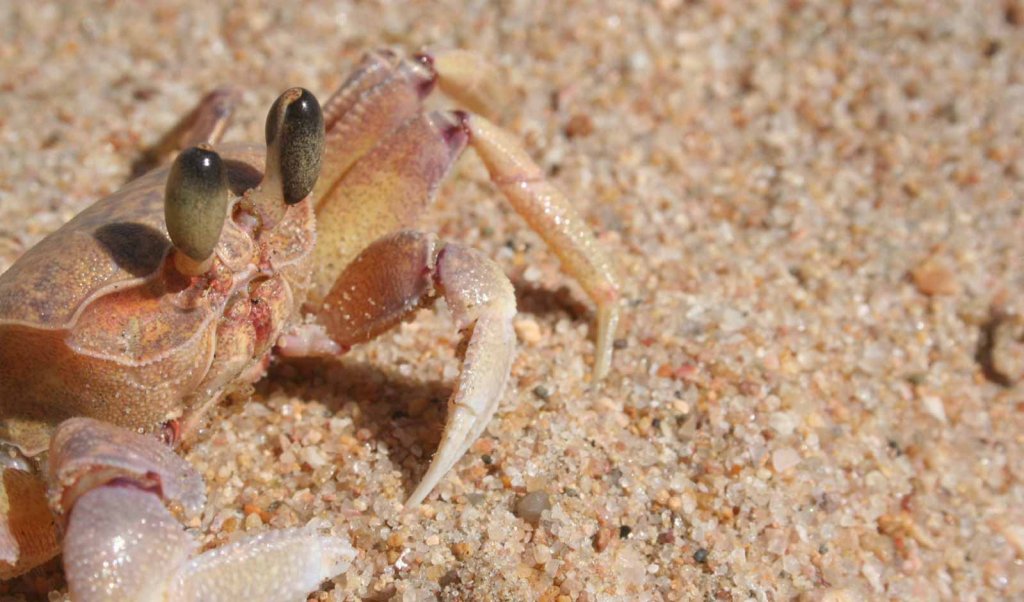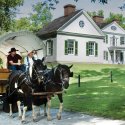The Wonder of Cumberland Island
History and nature combine on Georgia’s largest barrier island, near Kingsland
It is not often that you have the opportunity to really escape the hustle and bustle of everyday life and enter into a natural wonderland. But after watching a TV show about Cumberland Island National Seashore with my 10-year-old son, Sam, I knew we had to visit. From the stories of the island’s early settlers to its abundance of wildlife, the island captivated Sam. I asked if he wanted to go—hoping he’d say yes—and he was in.
My additional research showed that Kingsland, Georgia, just inland from Cumberland Island, would be the ideal place to stay.
When we arrived, Sam informed me that Kingsland is known as the city of “Royal Treatment.”
“Where did you learn that?” I asked.
“I looked it up online.” He answered plainly.
A walk on the wild side
Our journey began with a ferry ride on the Cumberland Queen, first in the sparkling waters of the St. Marys River, then the Intracoastal Waterway. “Awesome!” Sam exclaimed as he watched dolphins dance alongside the ferry. I pulled out my phone and captured a great shot of Sam grinning and pointing to the playful animals.
Upon arrival on the island, we had a choice of two landings for disembarkation—the Dungeness dock where we could take a guided tour around the ruins of the Dungeness Mansion, or the Sea Camp dock, which offered a shorter walk to the beach. We chose Dungeness, knowing we had plenty of time to hike the trail to the beach from there. From our very preliminary impressions, the island was far more impressive than anything we’d seen on TV or online.
Other guests joined us as a friendly and knowledgeable park ranger guided us through the Dungeness ruins. Though bare-bones now, lacking a roof and many parts of walls, it’s still easy to see how grand this mansion was in its prime. Sam told the guide (who, of course, already knew) that Dungeness Mansion was home to the Carnegies during the gilded age. The guide was happy to have a knowledgeable companion—smiling as he prompted Sam to share more of what he knew, and providing more depth and detail when Sam didn’t have the answers.
After the tour, we left the group and headed toward the beach. We strolled beneath the branches of centuries-old live oaks and basked in the warmth of the sunbaked white sands. Once we reached the sand, we kicked off our shoes, followed fiddler crabs to the edge of the gray/blue surf, and marveled at the raucous call of the clapper rail.
“Look,” Sam said with unbridled excitement, pointing to wild horses racing across the dunes. “This is where the Timucuan Indians once lived, and they ate wild turkey and oysters.”
“You really did your homework!” I said, impressed. He smiled, shrugged, and said, “Yeah, I guess.”
We talked about what we knew and speculated about what we didn’t as we sat down to picnic in the company of chattering birds.
As I pulled sub sandwiches from my backpack, Sam scrambled a few yards away and picked up a conch shell with a perfect spiraled twist at one end.
“Is anyone living in there?” I asked.
Sam checked the shell for occupants and shook his head.
“Then you can keep it,” I told him. “You’ll be able to hear Cumberland Island from home.”
We could have spent the entire time on the beach, but the day was waning, and more Cumberland Island treasures awaited, including the salt marsh and maritime forest.
The salt marsh

Leaving the beach, we walked around the sand dunes and approached the salt marsh. A beautiful vista of golden grasses, herbs, and low shrubs spread before us. I explained that the salt marshes of Cumberland Island were part land and part sea. “It is said that it is the most productive ecosystem in the world.”
“I know a lot of the animals that come here,” Sam proclaimed. He went on to tell me of fiddler crabs, ducks, raccoons, minks, and more, which feasted on the harvest of the marsh foods along with osprey, hawks, great blue herons, and belted kingfishers. It was a total kick for me to hear him so enthusiastic about nature, but then, who could blame him? We had a spectacular show.
While near the salt marsh, we witnessed a snowy egret spear a small fish with its dagger-like bill.
“Supper!” Sam exclaimed, laughing.
The maritime forest
Leaving the water’s edge, we ventured into the maritime forest and felt as if we had entered into the pages of a storybook.
Anchored by a magnificent live oak canopy, Cumberland Island’s maritime forest is veined with numerous trails for exploring. Sabal pines and saw palmetto line the main dirt road along with stately magnolia and longleaf pines.
Coming out of the coolness of the forest, we welcomed the warm sunshine that would accompany us back to the dock to await the ferry ride back to Kingsland.
As the ferry approached, Sam and I began to talk about our favorite things we’d seen on Cumberland Island. As we recapped, I realized we had experienced something quite out of the ordinary.
Back aboard the Cumberland Queen, Sam and I breathed in the salty air, and he asked me the best question of the trip.
“We can come back, right?”
I thought of how much more of the island we could explore: the Plum Orchard mansion, the many hiking trails, and the entire north end, which we could tour by van.
“We’ll be back,” I said confidently.
“I’ll start researching,” Sam replied.


